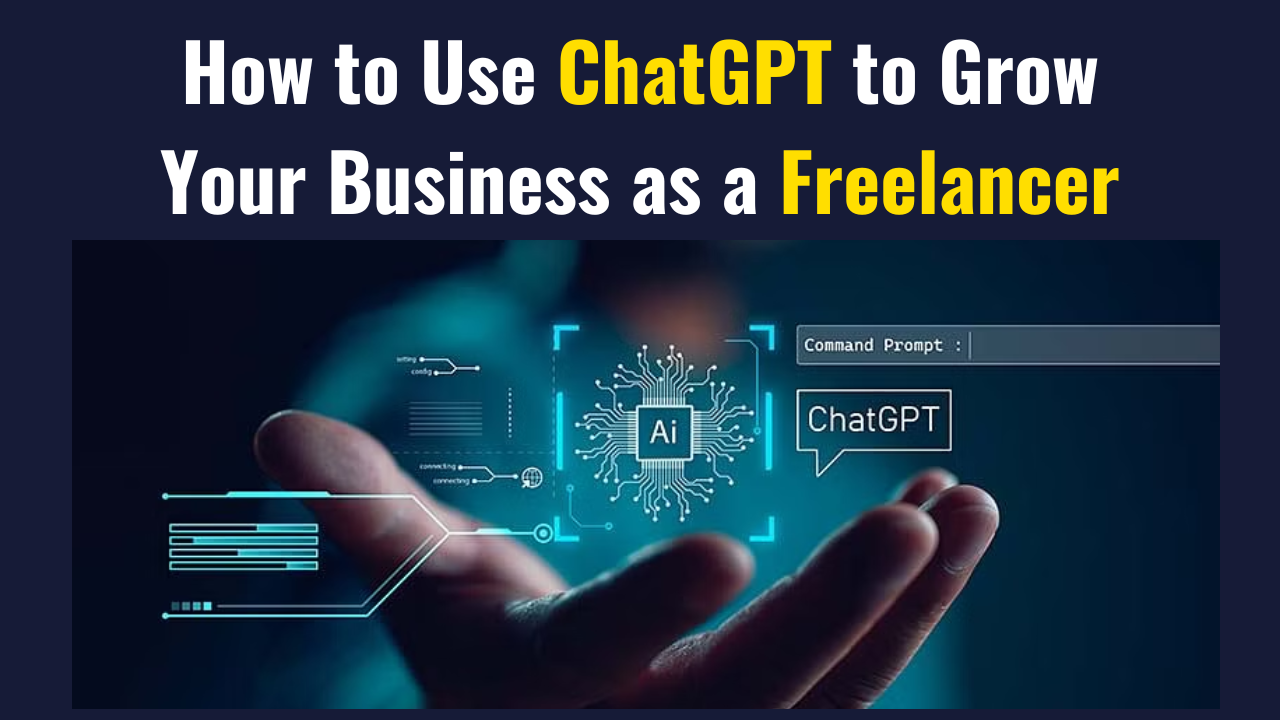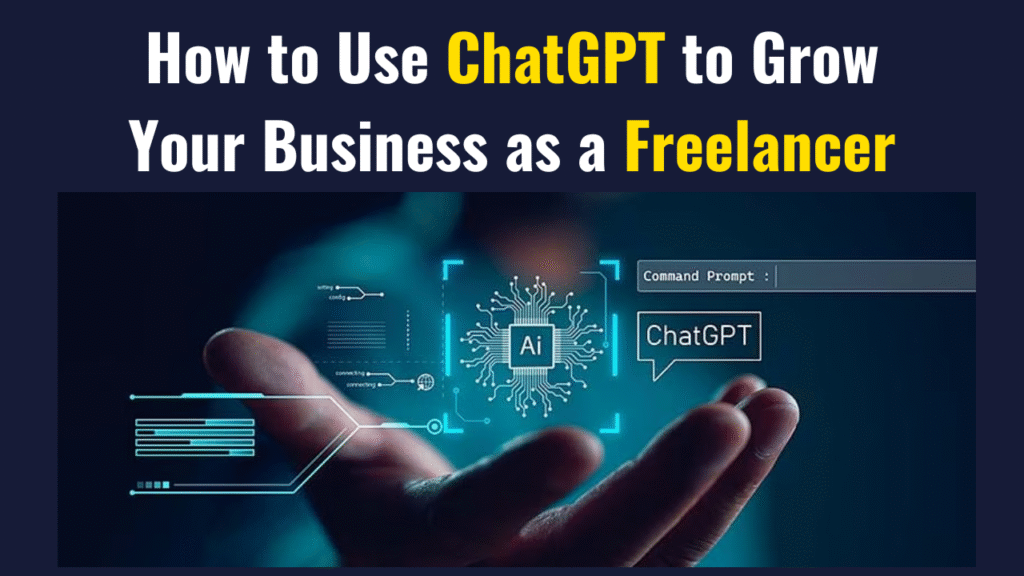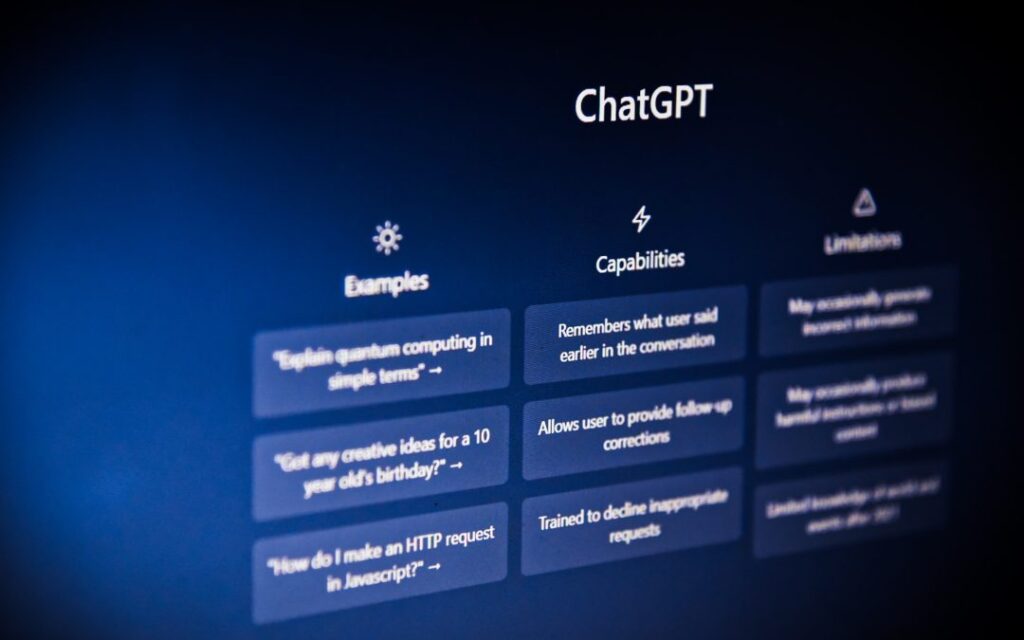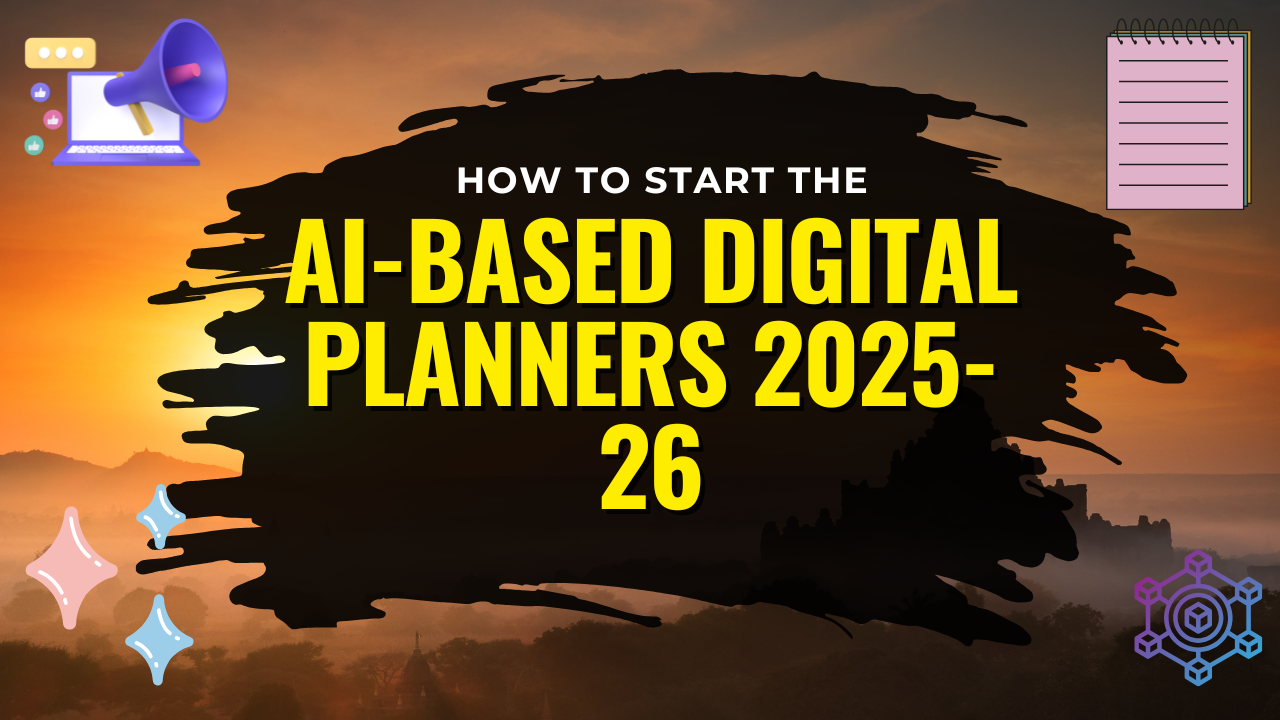
How to start freelancing on chatgpt for free
Earn Cash Using ChatGPT (Zero Investment Needed)
Table of Contents
ToggleIntroduction
today i am going to in this Article how to start freelancing on chatgpt for free.So, you want to know how to start freelancing on ChatGPT for free? Good call. The old gates are down. You don’t need a fancy degree, a massive portfolio, or a huge bankroll to get started anymore. AI, specifically ChatGPT’s free version, is the ultimate equalizer. It’s like having a brilliant, hyper-fast intern who never sleeps and doesn’t demand coffee. But—and this is a huge but—it’s not a magic money button. The real secret? You’re the magic. The AI is just your tool. This guide isn’t about replacing you; it’s about augmenting you. We’re going to walk through how to build real, marketable skills without spending a dime, find those first crucial clients on free platforms, and deliver work that makes them come back for more. Forget everything you think you know about how hard it is to start a business. This is your blueprint to building a freelance career from the ground up, with nothing but your brain, an internet connection, and a strategic mindset. Ready to turn your curiosity into cash? Let’s dive in. chatgpt freelance ideas

Laying the Groundwork – It Starts With Skill
Let’s get one thing straight right off the bat: clients aren’t paying for your ability to type prompts into ChatGPT. They’re paying for the value you create using it. That distinction is everything. The groundwork is all about building a foundation of skill and strategy that turns you from a random person with AI access into a credible freelancer. Think of it like this: anyone can buy a set of professional chef’s knives, but that doesn’t make them a chef. The skill is in knowing which knife to use, how to hold it, and how to create a masterpiece without slicing a finger off. Your first investment isn’t money—it’s time. Time to experiment, to play, to fail, and to learn what this tool can really do for a specific kind of problem. This phase is where you move from being a curious user to a strategic operator. It might seem tedious, but skipping this is why most people fail. They want to jump straight to getting paid without being worth paying for. Don’t be that person. Solid ground doesn’t shake when things get tough.
1.1. Master the Basics of ChatGPT
Alright, “master the basics” sounds a bit formal, doesn’t it? Let’s call it “learning to talk to your new AI coworker.” Because that’s essentially what you’re doing. The free version of ChatGPT (powered by GPT-3.5) is incredibly powerful, but you have to know how to guide it. This isn’t about simple questions like “write a blog about cats.” That’ll get you generic, blah content that anyone can get. The gold is in prompt engineering. Sounds fancy, but it’s just about being specific and giving the AI a clear role and goal. Start by assigning it a persona. Instead of “write a product description,” try “Act as an expert e-commerce copywriter for sustainable products. Write a compelling, 100-word product description for a bamboo toothbrush, targeting eco-conscious millennials. Use a friendly and persuasive tone and include a call-to-action.” See the difference? The second prompt gives context, role, audience, tone, and length. That’s how you get usable results. Practice this. Ask it to write the same thing in five different tones. Challenge it to outline a complex article. Use it to brainstorm 20 ideas for social media posts. This practice isn’t busywork; it’s your training ground. The better you get at prompting, the higher the quality of your raw material, and the less time you’ll spend editing.

1.2. Identify Your Freelance Niche (The Key to Success)
Here’s the single best piece of advice you’ll get: niche down. “I can write about anything!” is the fastest way to get hired by no one. Being a generalist means you’re competing with everyone and anyone. But being a specialist? That’s where you stand out. A niche is simply your specific area of expertise. It makes marketing easier, allows you to charge higher rates, and lets you become an expert faster. So, what niches work brilliantly with ChatGPT? Think about tasks that involve generating or refining text-based content. Content writing and blogging are obvious ones—using AI to research, outline, and draft articles. Copywriting for emails, ads, and social media posts is another goldmine. SEO is a huge one; use ChatGPT to analyze keywords, generate meta descriptions, and create content clusters. Virtual assistants can use it to draft emails, summarize meetings, and manage calendars. The list goes on: proofreading, idea generation, business name brainstorming, script writing for videos… your options are vast. My personal opinion? Don’t just pick what you think is profitable. Pick something you have a genuine interest in. If you love video games, niche into writing for gaming blogs or tech companies. If you’re a fitness nut, help personal trainers with their content. Your inherent interest will make the work feel less like work and will show in the final product you deliver.
Part 2: Your Free Freelancer Toolkit
You’ve got the mindset and the skills brewing. Now, what do you actually need to get started? The beautiful part is that your startup costs are essentially zero. You don’t need a business loan, a fancy office, or expensive software. Your toolkit is digital, lean, and incredibly effective. This is about leveraging completely free resources to present yourself as a professional and get the job done efficiently. We’re building a minimum viable business—the simplest version that can function and bring in revenue. Once the cash starts flowing, you can reinvest in upgrades, but for now, we’re keeping every penny in your pocket. This section is all about the “how.” How will you show your work? How will you communicate? How will you get paid? It’s less about flashy tools and more about smart, practical solutions that remove friction from your workflow. Setting this up right from the start makes you look organized and reliable, two traits clients absolutely love. Let’s break down your arsenal.
2.1. Your AI Co-Pilot: Using ChatGPT’s Free Version
Let’s talk about your main weapon: the free tier of ChatGPT. Is the paid Plus version with GPT-4 better? Absolutely. It’s more nuanced, more creative, and better at following complex instructions. But is it necessary to start? Not even a little bit. GPT-3.5 is more than capable of being your launchpad. The key is understanding its strengths and working within them. It’s brilliant for brainstorming, outlining, drafting, and rephrasing. Where it stumbles is with factual accuracy and sometimes very recent events (its knowledge is cut off at a certain point). This is actually a good thing! It forces you to stay in the loop as the human expert. You have to fact-check its outputs. You have to add your own recent knowledge and insights. This process is what adds the real value. My advice? Push the free version to its limits. Learn its quirks. See what kind of prompts give you the best results. Use it for every step of a project: “Generate 10 title ideas for an article about [topic],” “Now, create a detailed outline for the best one,” “Draft an introduction based on that outline.” You’ll be amazed at how much heavy lifting it can do for you, for free.
2.2. Your Free Business Infrastructure
You are now a business owner. Congrats! You need a digital storefront, a way to talk to customers, and a way to get paid. Here’s your free starter pack. For your portfolio, don’t stress about a custom website yet. Use what you have! LinkedIn is a perfect professional platform. Write posts about your process, publish articles there, and list your services. Create a Google Doc or a PDF with 3-5 of your best writing samples (created with ChatGPT and heavily edited by you, of course) and share the link. Tools like Carrd or Linktree offer free tiers to create a simple one-page site linking to your work. For communication, create a professional email address. A simple firstname.lastname@gmail.com is fine, or better yet, get a free custom domain with your name from a provider like Zoho Mail. For invoicing and payments, you have fantastic free options. Wave Apps is a superstar here, allowing you to create and send professional invoices and even track expenses at no cost. PayPal is universally accepted and easy to use for receiving payments from clients. This entire setup takes an afternoon and costs nothing, but it makes you look a million bucks.
Finding Clients – The Free Way
This is the part that terrifies everyone: finding people who will actually pay you. It feels like shouting into a void, right? Well, it doesn’t have to. The internet is littered with clients looking for exactly what you offer; you just need to know where to look and how to talk to them. The goal here isn’t to spam every platform in existence. It’s to strategically position yourself in a couple of key places and do it really well. We’re going to focus on methods that don’t require you to spend money on ads or premium memberships. This is about hustle, not budget. It requires consistency and a bit of courage, but the formula is straightforward. You’ll face rejection. Everyone does. But each “no” gets you closer to a “yes.” The key is to start. Send one proposal. Make one post. Send one email. Momentum builds from action, not from thinking about acting.
3.1. Leverage Free Freelance Platforms
Websites like Upwork, Fiverr, and PeoplePerHour get a bad rap sometimes for being competitive and low-paying. But let me tell you, they are a freelance rookie’s best friend. Why? Because they bring the clients to you. You don’t have to go searching for people who might need a writer; they are right there, posting jobs every single minute. The trick is to not get lost in the crowd. Your profile is your first impression. Don’t just say “I’m a writer.” Say “I’m a tech blog writer who uses AI tools to deliver SEO-optimized content quickly.” See the difference? Niche down even in your profile! When applying for jobs, your proposal is everything. Ditch the generic “I am interested in your job” copy-paste. Use ChatGPT to help you draft a personalized proposal template, but then you must customize it. Mention the client’s project by name, give a brief idea of how you’d approach it, and explain how your use of AI is a benefit to them (faster turnaround, consistent quality, ability to iterate quickly). Start by bidding on smaller, lower-budget jobs to get those first few 5-star reviews. Those reviews are social proof that will make winning bigger jobs infinitely easier.
3.2. The Power of Social Media & Networking
Stop scrolling and start engaging. Your ideal clients are already hanging out on social media; you just need to join the conversation. LinkedIn is the absolute king for B2B freelancing. Optimize your profile with keywords related to your niche. Post regularly—share tips, insights, or even a case study of how you used ChatGPT on a project. People are fascinated by this stuff! Connect with content managers, marketing directors, and founders at small startups. Reddit is a hidden gem. Subreddits like r/forhire, r/HireAWriter, and r/slavelabour have people posting gigs constantly. Read the rules carefully and engage respectfully. Facebook Groups are another great spot. Search for groups like “Content Writers for Hire” or “Freelance [Your Niche] Writers.” Don’t just post a “hire me” ad—that’s spam. Be a helpful member of the community. Answer questions, provide value, and then when you’ve built a bit of rapport, you can let people know you’re available for work. This organic approach takes longer but builds much stronger connections.
| Full Guide for freelanicng | how to use chatgpt-4 for free |
3.3. Cold Outreach (DIY Style)
The thought of sending cold emails or DMs makes most people break out in a cold sweat. But what if I told you it doesn’t have to be sleazy? It’s not about blasting a thousand people with a generic spam message. It’s about targeted, personalized, and valuable outreach. First, find 10-20 small businesses or startups in your niche whose online content (blog, social media) could use a little help. Then, use ChatGPT to help you draft a short, friendly template. But—and this is non-negotiable—you must personalize it. Mention their company by name, point to a specific piece of their content and say what you liked about it, and then briefly suggest one idea for improvement. Your opener could be something like, “Loved your recent article on [their topic]. I noticed you might not have a presence on Pinterest yet; I used AI tools to quickly mock up a few pin ideas for it if you’re interested?” You’re not just asking for something; you’re offering a specific, free piece of value first. Your hit rate will be low, but it only takes one “yes” to get started.
Delivering Value & Building a Reputation
You landed a client! Amazing. Now the real work begins. This phase is where you turn a one-off gig into a long-term relationship. It’s all about trust, reliability, and exceeding expectations. Anyone can deliver a piece of content. A professional freelancer delivers peace of mind. The client needs to know that the project is in good hands and that they don’t have to worry about it. Your goal is to make the process so smooth and the result so good that the client immediately thinks of you for their next project. This is how you build a sustainable business—not through constant hustling for new clients, but through repeat work and referrals. Your reputation is your most valuable asset. Guard it fiercely.
4.1. The Essential Workflow: Human-in-the-Loop
This is the most important concept in this entire guide. You are not a ChatGPT parrot. You are a skilled professional using a powerful tool. Your workflow should always be a collaboration, not a delegation. Here’s what that looks like in practice: 1. You brief ChatGPT. You use your expert prompting skills to generate a first draft or outline. 2. You edit and refine. This is where 90% of your value is added. You fact-check every claim. You inject personality, humor, and your unique voice. You rearrange paragraphs for better flow. You ensure it aligns perfectly with the client’s brand tone. 3. You add human insight. You include personal anecdotes, opinions, or examples that ChatGPT could never know. You make connections that require real-world experience. The final product you send to the client should be polished, accurate, and unmistakably human. I always tell my clients, “I use AI for efficiency in drafting, but every piece is meticulously edited and finalized by me to ensure it meets our high standards.” This transparency builds trust and justifies your rate.
4.2. Managing Projects and Communication
Nothing kills a client relationship faster than poor communication. Be proactive. When you get a project, confirm the deadline and deliverables. If you hit a snag, communicate it early. Don’t disappear for days and then show up with the finished work. A simple “Hey, just checking in—the first draft is coming along great, and I’m on track to deliver it on Friday” works wonders. It shows you’re on top of things. Use free tools to stay organized. Trello is fantastic for creating a simple personal board with columns for “To Do,” “Doing,” and “Done.” Google Docs is perfect for collaborating on writing projects with clients. Keep all your project notes and communication in one place. Setting clear expectations and then meeting (or beating) them is the simplest way to be seen as a reliable professional, not just a hobbyist.
Scaling Beyond Free (Optional Future Steps)
You’ve got a few clients, some great reviews, and money is starting to come in consistently. What’s next? This is where you can start thinking about investing back into your business to grow it. This isn’t about spending money frivolously; it’s about investing it strategically to save time, increase your quality, and command higher rates. Remember, these are optional steps for the future. Don’t feel any pressure to do this on day one. The free method works perfectly well to get you started. But it’s good to have a roadmap for where you’re headed once the foundation is solid.
Once you’re consistently earning, upgrading to ChatGPT Plus ($20/month) for access to GPT-4 is probably the first and best investment you can make. The jump in output quality is significant. GPT-4 is much better at understanding nuance, creativity, and complex instructions, which means you’ll spend less time editing and refining. Next, consider building a simple personal website with a custom domain (e.g., yourname.com or yourbusinessname.com). A site on Carrd or WordPress doesn’t cost much and acts as a central hub for your portfolio, testimonials, and services. It adds a huge layer of professionalism. Finally, the ultimate goal: raising your rates. With a portfolio of successful work and glowing testimonials, you have the social proof to justify charging more. Don’t be afraid to do it. Your time and expertise are valuable.
Conclusion
And there you have it. A complete, step-by-step guide to building a freelance career from scratch using the free version of ChatGPT. It’s not a get-rich-quick scheme—it’s a get-skilled-quick scheme that leads to getting paid. The path is clear: hone your prompting craft, choose a specific niche, set up your free business tools, hustle for those first clients on free platforms, and then deliver incredible, human-polished work that makes you unforgettable. The barrier to entry has never been lower. The tools are literally at your fingertips. The only thing left to do is take that first step. What are you waiting for? Go prompt, create, and conquer.



